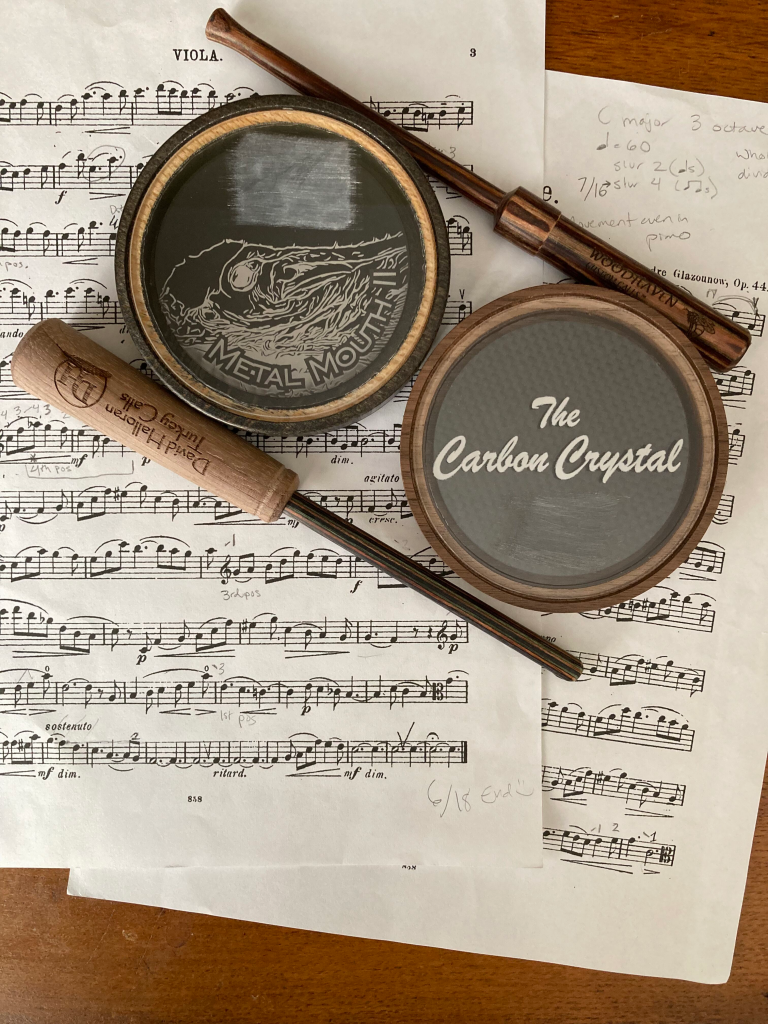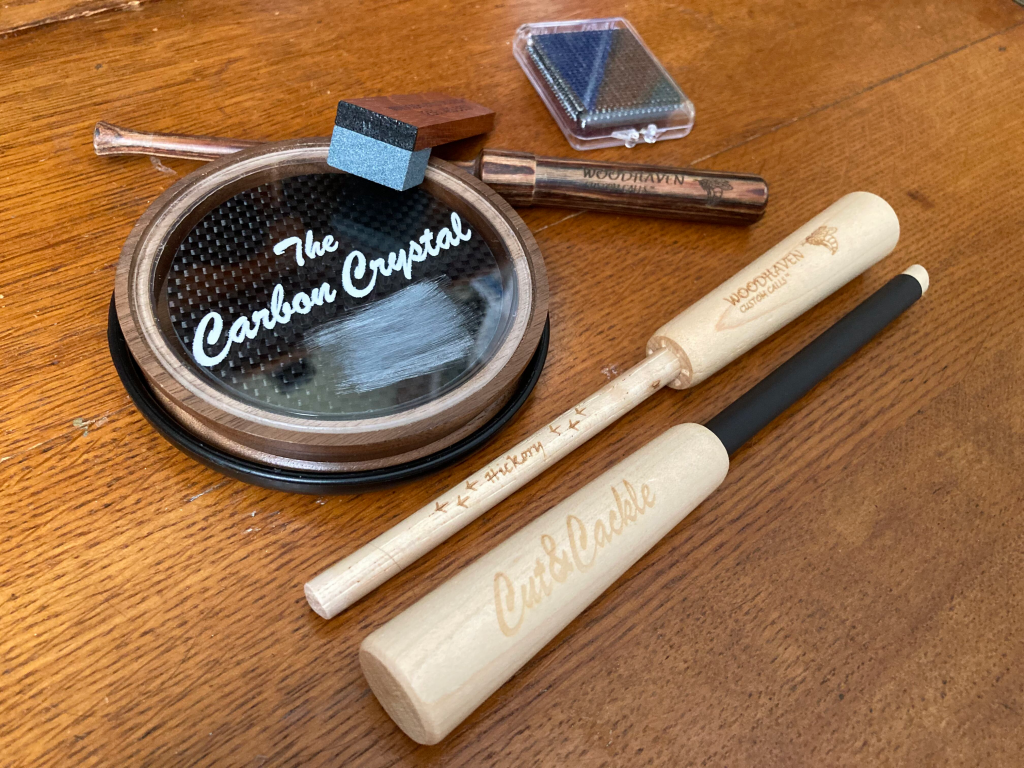Resounding Soundboards
Every part of a turkey call — even a secondary internal component such as a soundboard — is essential to its overall sound quality, and each part can make a distinctive difference.

“The whole is greater than the sum of its parts.” That quote is often attributed to the ancient Greek philosopher Aristotle. It means that the value of something’s components is only realized when combined to create the whole. That reference can relate to turkey calls, especially a pot-and-peg call with its various components.

When building a pot-and-peg call, the many potential materials used to make the chamber, soundboard, calling surface and striker combine to resonate that call’s overall sound.
Of all the various parts of a pot call, I bet the soundboard is its most mundane, overlooked and underrated component. The materials used for a soundboard are typically glass, slate or wood, so there’s usually not much variety.
But the soundboard in a pot call is essential. Its purpose is to help deliver a high-to-low, two-tone yelp. Every turkey has a two-tone yelp. Some are high, some low, some raspy and some clear, but they all have two tones: a higher one at the beginning and a lower one at the end.
That said, nontypical soundboards exist. Several call makers craft their calls with soundboards using unique materials such as metal or carbon fiber. Soundwaves bounce off these super-hard components differently, positively affecting vibration and the sound quality of the call’s two-tone yelp.
Here are two prime examples of quality pot calls that use nontypical soundboards.

David Halloran’s Metal Mouth II features a crystal-calling surface over a concave aluminum soundboard set in an ebony-stained sycamore pot. The metallic soundboard’s design makes for nasty yelps with effortless rollover. The call comes equipped with a onepiece turned striker, a two-piece striker and a calling-surface conditioning stone.
“The aluminum soundboard generates a distinctive frequency and unique tone that often will get a stubborn gobbler to react when other calls fail to do so,” said David Halloran, founder and owner of David Halloran Turkey Calls. “The concave design of the Metal Mouth’s soundboard sets the call apart. As the call is played from the outside edge toward the middle, the concave design creates a harsh drop from the high to low notes of the twotone yelp.”
Learn more at www.davidhalloranturkeycalls.com.
Woodhaven Custom Calls’ Carbon Crystal is made of American walnut. It has a pure crystal calling surface and a carbon-fiber soundboard for a more authentic hen sound. The call comes with three strikers — laminated flaretip, hardwood, and cut-and-cackle — plus a conditioning stone and a surface-saver lid.
“The carbon disc (soundboard) on the inside of this call delivers a harmonic effect,” said Mike Pentecost, founder and owner of Woodhaven Custom Calls. “The acoustic-grade material came from the music industry when I discovered that guitar makers sometimes use it for harmonic dampening in their guitars. This soundboard material is ultra-effective in our Carbon Crystal pot call and is a very popular call in our lineup.”
Learn more at www.woodhavencustomcalls.com.
The word resounding is an adjective that means expressing something unmistakably or forcibly and clearly. That’s fitting because a soundboard’s job is to help produce undeniable turkey sounds. Soundboards can make a big difference in a call’s overall sound quality — so much that the materials of metal and carbon are specifically called out in the names of the two excellent turkey calls mentioned here. Be sure to check them out.
